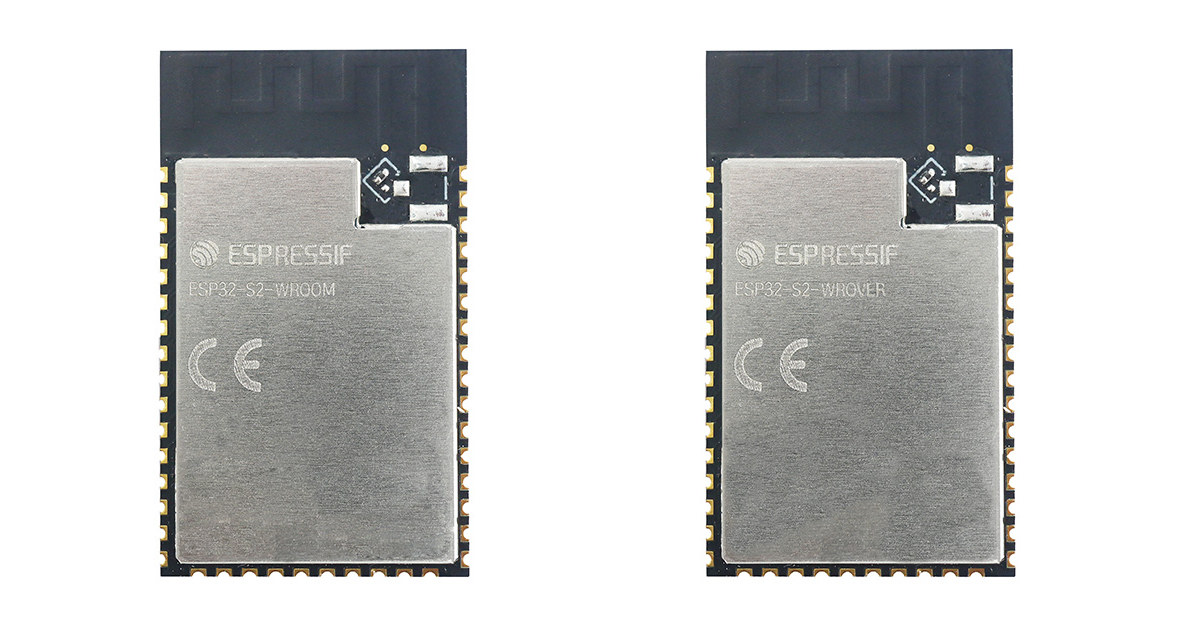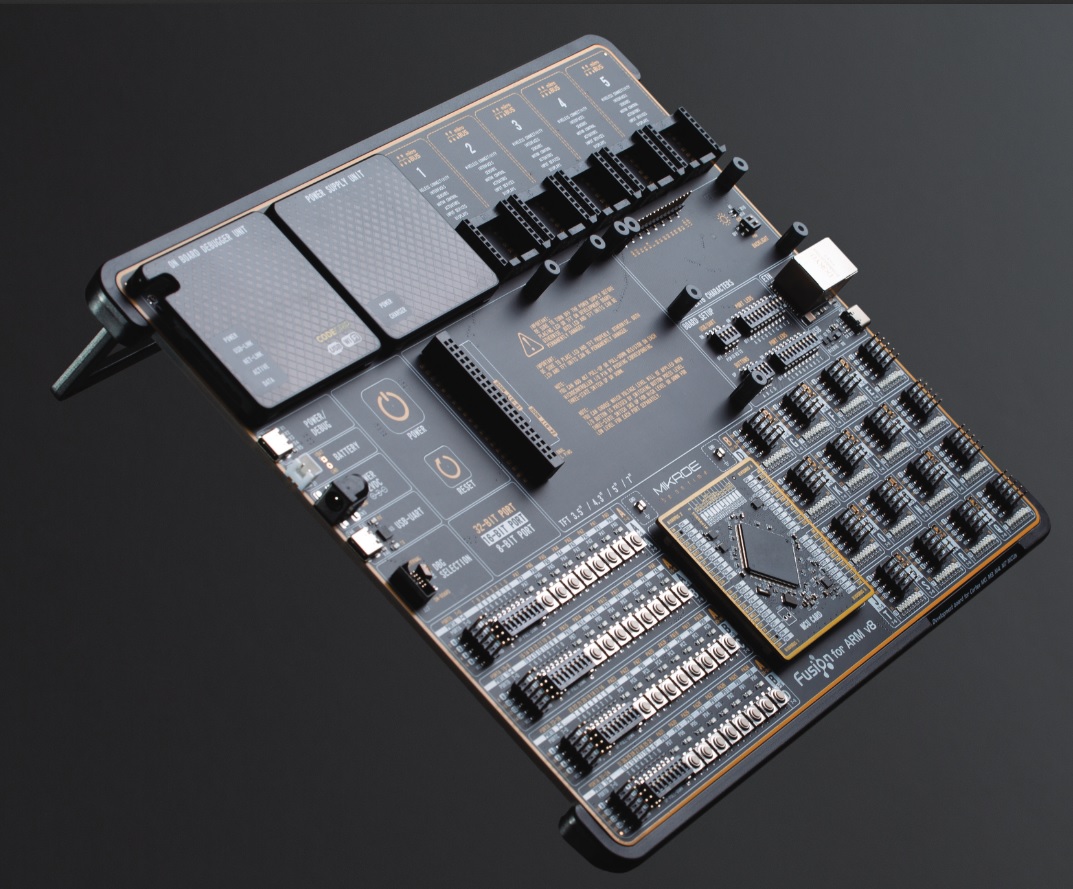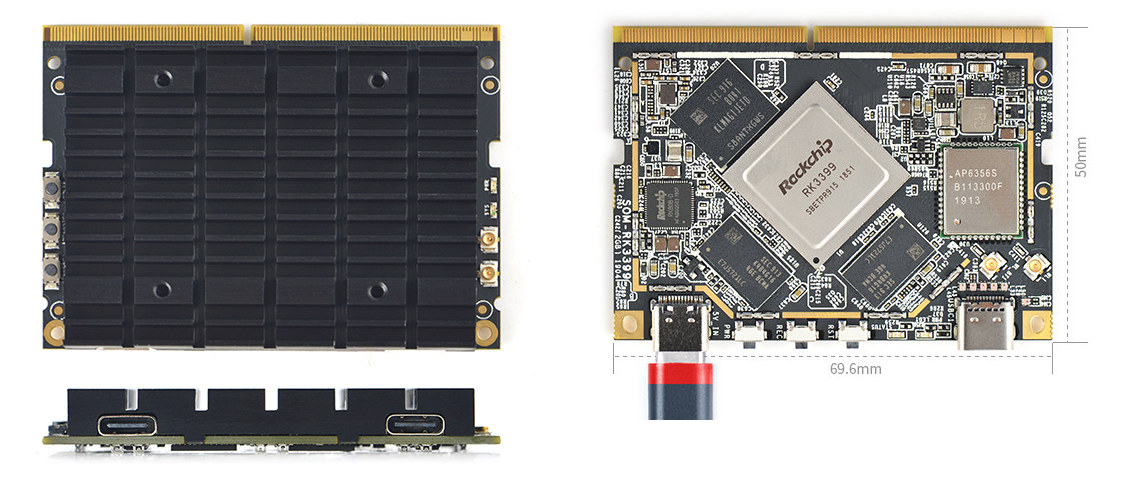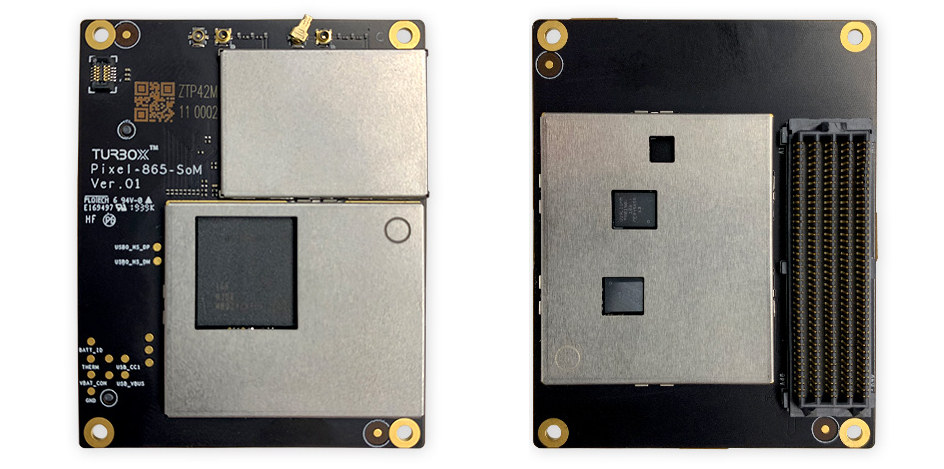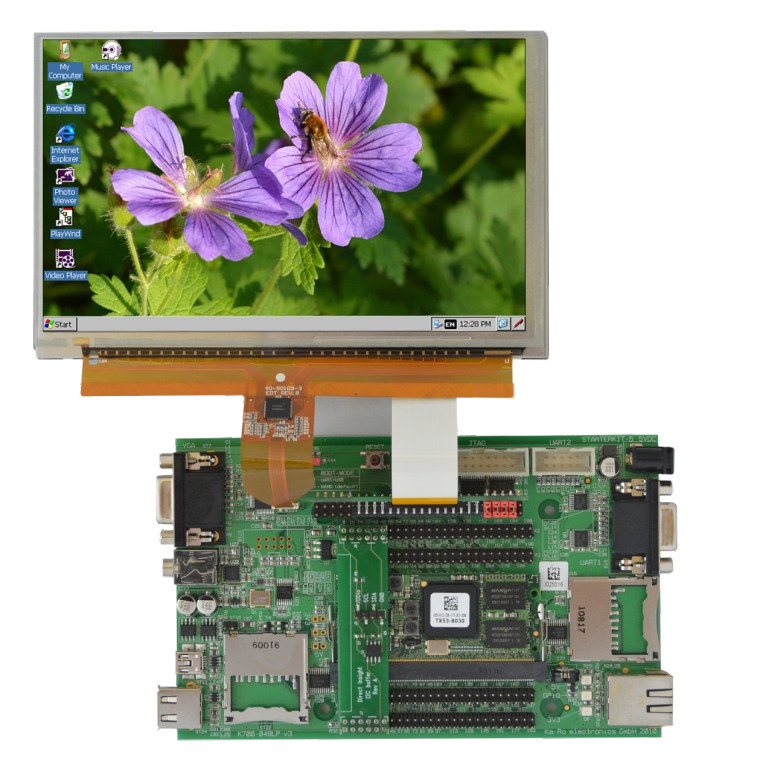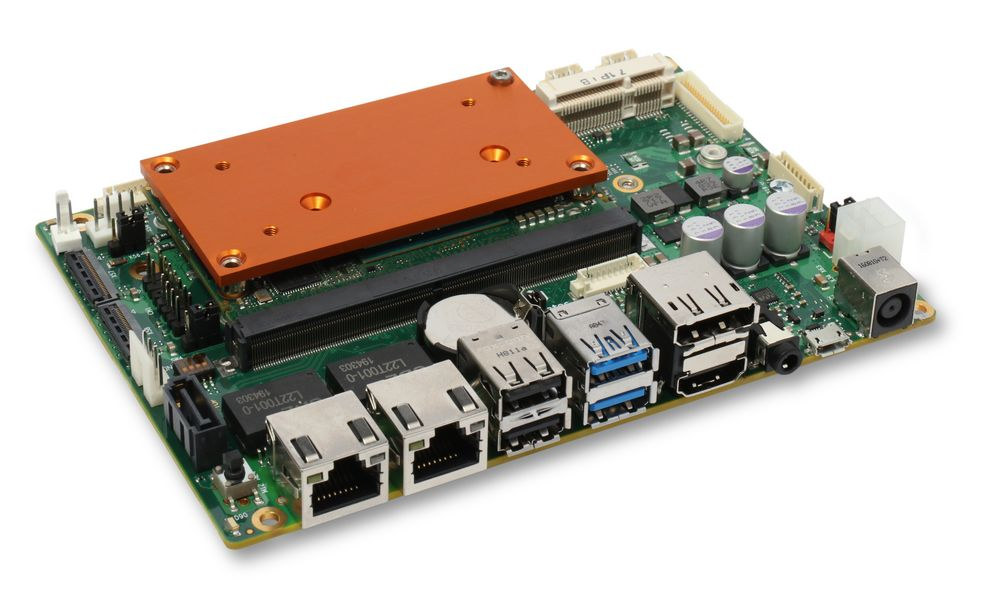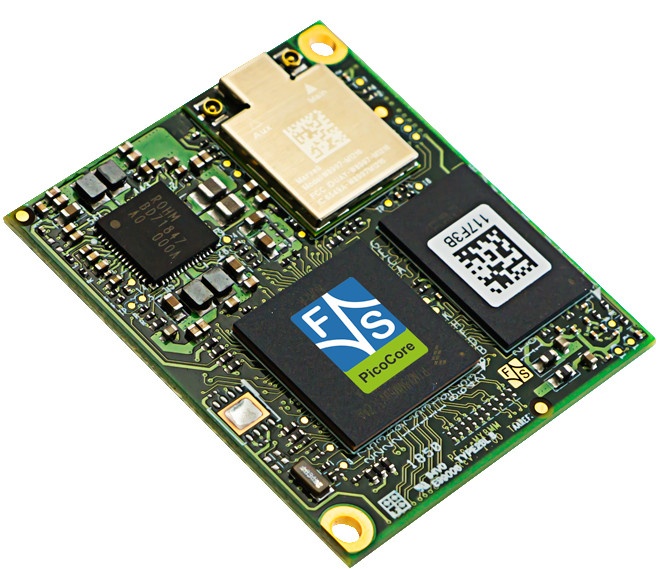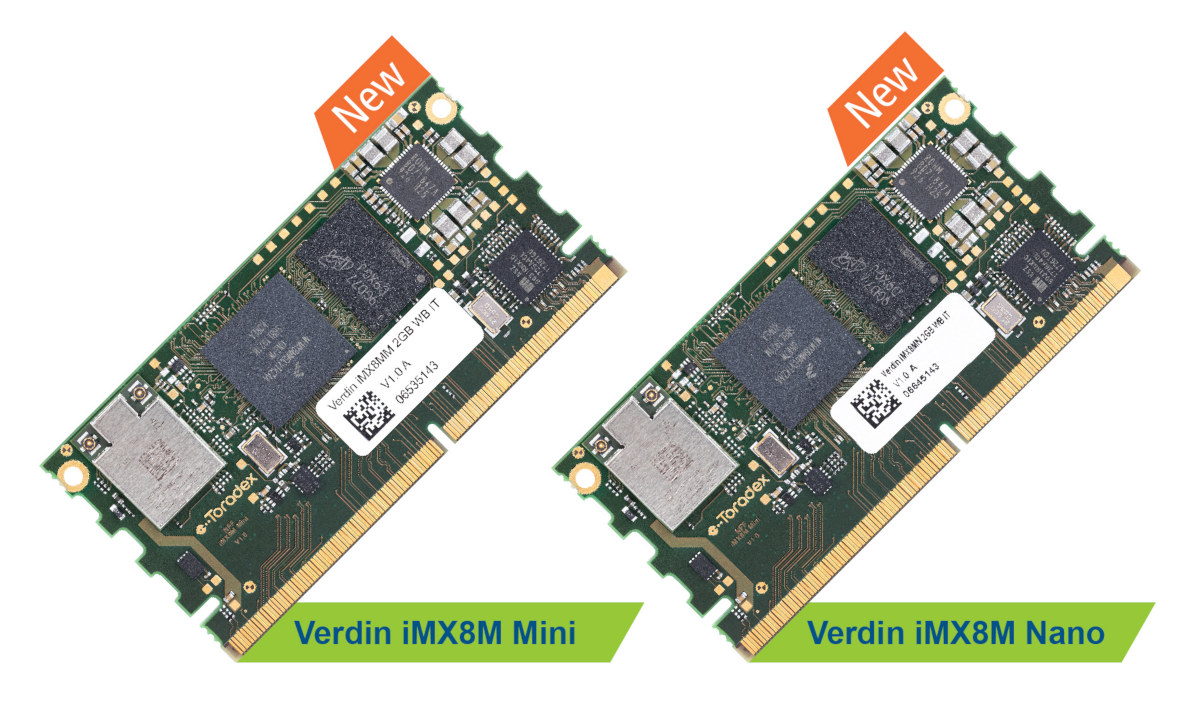Espressif Systems ESP32-S2 was announced in May 2019, before the release of the datasheet and first internal development boards a few months later. Mass production was delayed due to COVID-19, but earlier this month we reported ESP32-S2 mass production had started and the company has a new ESP32-S2-Kaluga-1 multimedia development board in the works. So it was just a question of time before the processor, modules, and boards become available. Unexpected Maker recently got a development kit with ESP32-S2 final silicon, so I thought maybe I could find ESP32-S2 hardware on Aliexpress. I had no luck finding modules or boards at this time, but one seller is currently selling ESP32-S2 for just $1 per piece, but the trick is that you’d have to purchase 2,000. It’s also about the same price on Digikey. As a reminder, ESP32-S2 SoC is based on a single Xtensa LX7 core clocked at 240 MHz, […]
MikroElektronika Launches Fusion for ARM & EasyPic MCU Development Boards
During Embedded World 2020 (EW2020), some companies withdrew their presence, while some were at the event. MikroElektronika presented several new boards and among them Fusion for ARM v8 and EasyPic v8 development boards. While we already wrote about Fusion fo TIVA, we haven’t covered any EasyPic board yet. Development boards from MikroElektronika allow rapid prototyping in the most efficient and effortless way. Fusion for ARM v8 Fusion for ARM v8 belongs to the Fusion family of development boards. It has integrated the world’s first embedded debugger/programmer over WiFi, while the CODEGRIP WiFi license is available as an add-on feature. The board is designed to be used in almost every environment retaining full debugging and programming access. The CODEGRIP currently supports more than 1600 microcontrollers from different vendors. The Fusion board integrates a new MCU card standard. It is a low profile standard where sockets consist of two connectors (male/female) which […]
FriendlyELEC SOM-RK3399V2 CPU Module Gets 4GB LPDDR4 RAM Upgrade
Last year, FriendlyELEC launched SOM-RK3399 system-on-module (SoM) powered by Rockchip RK3399 hexa-core processor combined with 2GB DDR3 memory, 16to 64GB flash, and a built-in WiFi 5 module. Contrary to most SoM’s on the market, SOM-RK3399 could work in standalone mode thanks to two USB-C ports, although it could also be integrated into a carrier board to create a complete development board with more ports and interfaces. The company has now introduced an update with SOM-RK3399V2 CPU module with 4GB LPDDR4 RAM, as well as a small change in the layout for the LED’s and buttons, but the rest of the features remain the same. The company also appears to have changed the way they handle cooling with SOM-RK3399V2 shipping with a heatsink, while SOM-RK3399 cooling was handled by a heatsink + cooling connected to the carrier board. SOM-RK3399V2 specifications: SoC – Rockchip RK3399 big.LITTLE hexa-core processor with 2x Cortex-A72 cores […]
Thundercomm Announces Qualcomm based Modules for Smart Speakers, LTE IoT, Smart Retail, and 5G Applications
Based in California in the US, Thundercomm Technology Co., Ltd. (aka Thundercomm) is a provider of IoT products & technologies for OEM/ODMs, enterprises and developers. The company introduced several Qualcomm based “TurboX Systems-on-Module” for smart speakers, LPWAN IoT devices with NB-IoT and LTE Cat M1 connectivity, smart retail applications, and 5G powered devices. TurboX C404 and C405 SOMs for Smart Speakers and Soundbars Key features and specifications: SoC – Qualcomm Snapdragon C404 / C405 with CPU – Quad-core Arm Cortex-A53 @, 1.4 GHz GPU (C405 Only) – Qualcomm Adreno 306 GPU @ 600 MHz DSP -2x Hexagon QDSP6 v66 – Low Power Audio Subsystem & Audio Compute DSP System Memory & Storage – 1GB LPDDR3 + 8GB eMMC flash in eMCP package; SD card signals Connectivity 2×2 MIMO WiFI 5 802.11 a/b/g/ac + Bluetooth 5.0 + FM via WCN3999 Gigabit Ethernet (RGMII) Display Interfaces (C405 Only) 4-lane MIPI DSI port […]
TRITON-TX8M i.MX8M Mini / Nano Modules & Devkits Support Linux, Windows 10 IoT Core, and (Soon) QNX 7.0
UK-based Direct Insight has recently unveiled TRITON-TX8M system-on-module (SoM) powered by NXP i.MX 8M Mini or Nano processor, coupled with up to 2048MB DDR3L and a 4GB eMMC flash. The tiny (68 x 26 mm) SODIMM module is pin-compatible with the company’s earlier TRITON-TX i.MX6 / i.MX8 module family, and currently support Linux and Windows 10 IoT Core, with a QNX 7.0 BSP in the works. TRITON-TX8M SoM specifications: SoC TRITON-TX8MM – NXP i.MX8M Mini Quad 4x Arm Cortex-A53 processor @ 1.6 GHz with real-time Cortex-M4F core, Vivante GC NanoUltra 3D GPU + GC320 2D GPU, 1080p VPU TRITON-TX8MN – NXP i.MX8M Nano Dual 2x Arm Cortex-A53 processor @ 1.4 GHz with real-time Cortex-M7 core, Vivante GC7000UL GPU with OpenGLES 3.0, OpenCL and Vulkan support System Memory – 512MB, 1GB, or 2GB RAM Storage – 4GB eMMC flash 200-pin SODIMM200 edge connector with Storage – 2x SD Card/SDIO Display – […]
Congatec conga-SMC1 3.5″ Carrier Board is Designed for NXP i.MX8 SMARC Modules
Last year, Congatec introduced SMARC 2.0 compliant systems-on-modules based on NXP i.MX 8, i.MX 8M Mini and i.MX 8M Nano processors, together with Conga-SEVAL carrier board designed for evaluation and early software development, but is not suitable for deployment in the field. The company has now unveiled a standard 3.5″ carrier board – conga-SMC1 – that takes any of the company’s i.MX8 SMAC modules, in order to help their customers bring products faster to market thanks to a commercial-off-the-shelf (COTS) board. Congatec conga-SMC1/SMARC-ARM carrier board features and specifications: Supported SoM – conga-SMX8 (i.MX8), conga-SMX8-Mini (i.MX 8M Mini), or conga-SMX8-Nano (i.MX 8M Nano). Future SMARC 2.0 Arm-based modules should also be supported Storage – 1x SATA III (support of SATADOM VCC PIN 7 and PIN 8), 1x SATA power (+5V, +12V), MicroSD card socket, M.2 NVMe SSD support Display Interface 1x LVDS 18/24bit single/dual channel LVDS 2x optional eDP/DSI (dependent on […]
PicoCore MX8MN is a Tiny NXP i.MX 8M Nano Computer-on-Module
The PicoCore MX8MN Nano carries the NXP i.MX 8M Nano F&S Elektronik Systeme has announced the development of the smallest i.MX 8M based CoM yet: the PicoCore MX8MN Nano. Previously we had reported on the Congatec Conga-SMX8 Nano which was a fairly small CoM compliant with SMARC 2.0 standard. The PicoCore MX8MN is based on the NXP i.MX 8M Nano CPU with 1 to 4 Arm Cortex-A53 cores and a Cortex-M7 real-time core. The Nano is set to carry up to 8GB RAM and 32 GB eMMC, with optional WiFI/BT and support for -40º C to 85º C temperature ranges. Similar to Predecessor The PicoCore MX8MN Nano is very similar in structure to the PicoCore MX8MM Mini CoM, but with a different i.MX 8M Mini processor featuring the same Arm Cortex-A53 cores, but the Cortex M4 real-time core is changed to a more powerful Cortex-M7 core in the MX8MN Nano. […]
Toradex Launches New Verdin Arm SoM Family Starting with iMX8M Mini/Nano Modules
So far, Toradex had two Arm-based system-on-module families with the smaller, lower-power Colibri and more powerful Apalis modules. The Colibri form factor was first defined in 2005, and the company is still maintaining it, but since then new interfaces have emerged, so Toradex has now designed a new low-power module family called Verdin. Toradex Verdin modules offer more I/Os with a 260-pin edge connector, include a battery-ready design with a wide input voltage range (3.3 to 5V), low power 1.8V IOs, the ability to easily extend power management to carrier board peripherals, and off-the-shelf thermal solutions. The modules are also tested for EMC, shock and vibration tolerance, and “Toradex Direct Breakout” is said to simplify signal routing on carrier boards as high speed, impedance critical signals are routed from the source IC to the edge connector on the Verdin module in such a ways to limit complexity on the carrier […]


